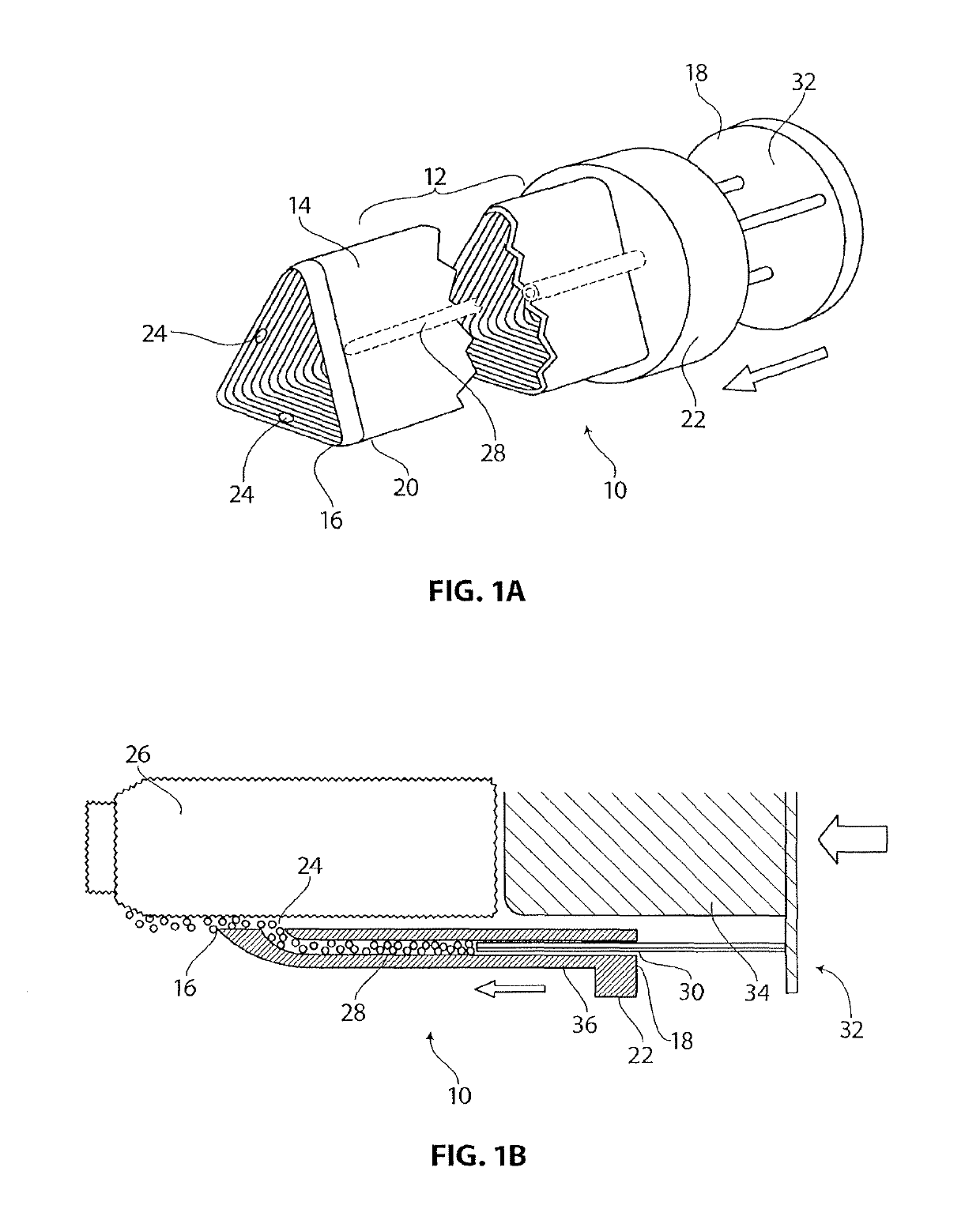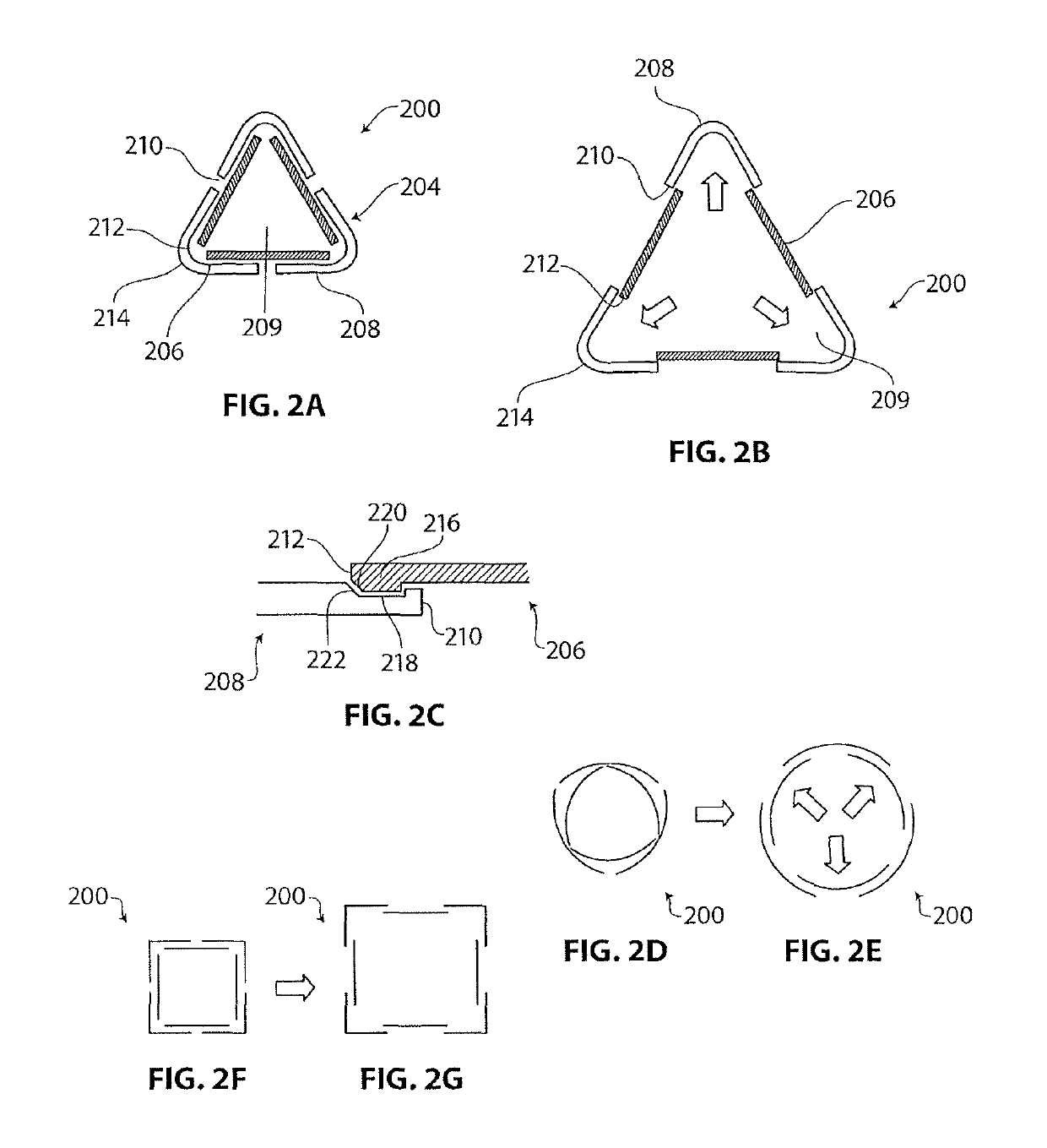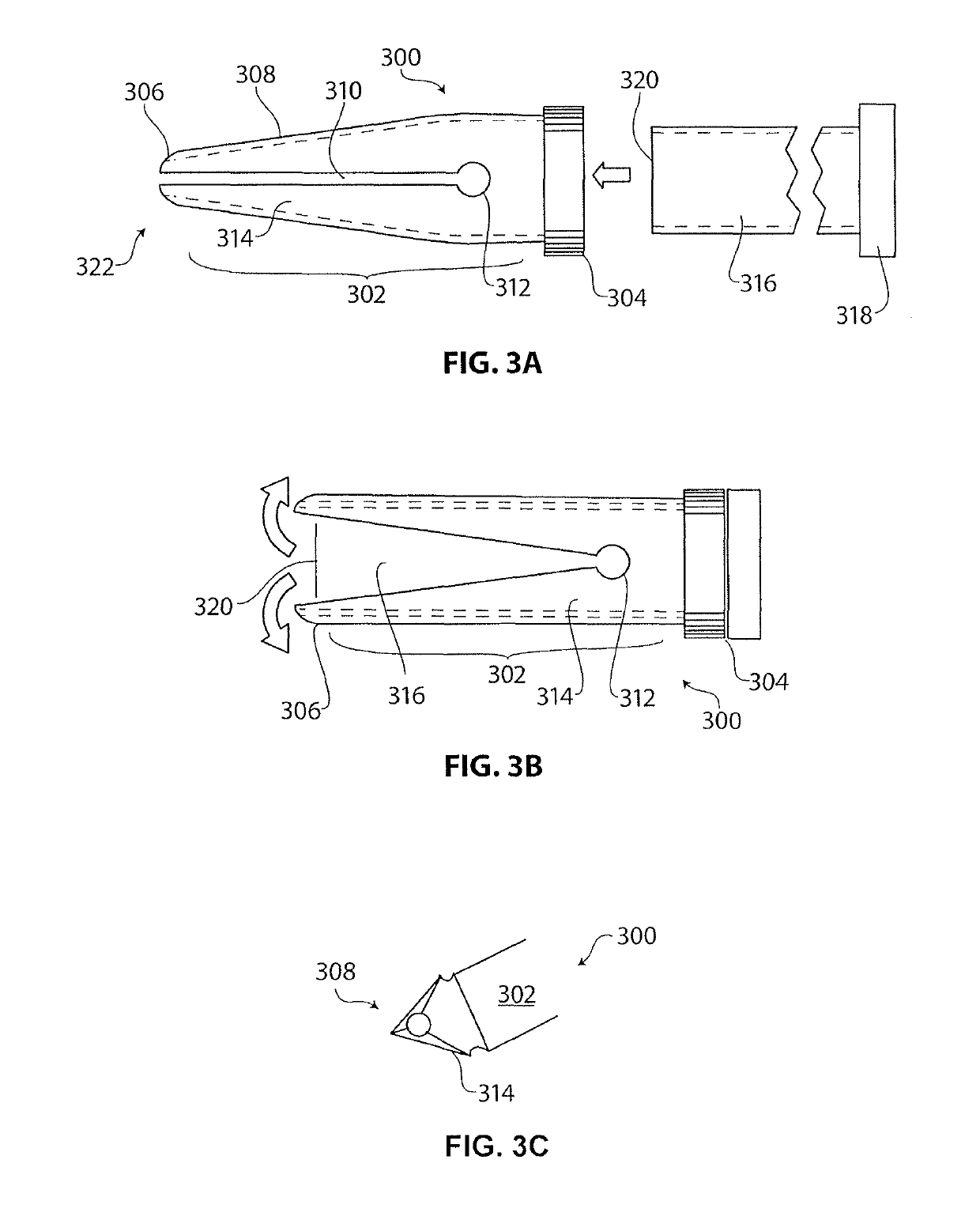Systems, device, and methods for joint fusion
a joint fusion and system technology, applied in the field of systems, devices and methods for joint fusion, can solve the problems of affecting the ability of each spinal segment to bear weight, too much movement between two vertebrae, and localized pain and difficulties
- Summary
- Abstract
- Description
- Claims
- Application Information
AI Technical Summary
Benefits of technology
Problems solved by technology
Method used
Image
Examples
Embodiment Construction
[0244]Tissue Dilator and Protector
[0245]FIGS. 1A and 1B are a perspective view and a longitudinal cross-sectional view, respectively, of an embodiment of a dilator 10 with an integrated infusion system. In some embodiments, the dilator 10 can be used as a soft tissue protector in addition to or in place of its function as a dilator 10. In some embodiments, the dilator 10 has a longitudinal body 12 with a wall 14 that can be shaped to match the cross-sectional profile of an implant 26. The wall 14 can define a passage that extends through the longitudinal body. For example, if the implant 26 has a triangular cross-section, then the hollow interior of the dilator 10 can have a triangular cross-section that matches the implant geometry, such that the implant 26 can pass through the interior of the dilator 10. In other embodiments, the implant 26 can have other cross-sectional geometries, such as a square implant, a hexagonal implant and the like, and the cross-sectional shape of the in...
PUM
 Login to View More
Login to View More Abstract
Description
Claims
Application Information
 Login to View More
Login to View More - R&D
- Intellectual Property
- Life Sciences
- Materials
- Tech Scout
- Unparalleled Data Quality
- Higher Quality Content
- 60% Fewer Hallucinations
Browse by: Latest US Patents, China's latest patents, Technical Efficacy Thesaurus, Application Domain, Technology Topic, Popular Technical Reports.
© 2025 PatSnap. All rights reserved.Legal|Privacy policy|Modern Slavery Act Transparency Statement|Sitemap|About US| Contact US: help@patsnap.com



